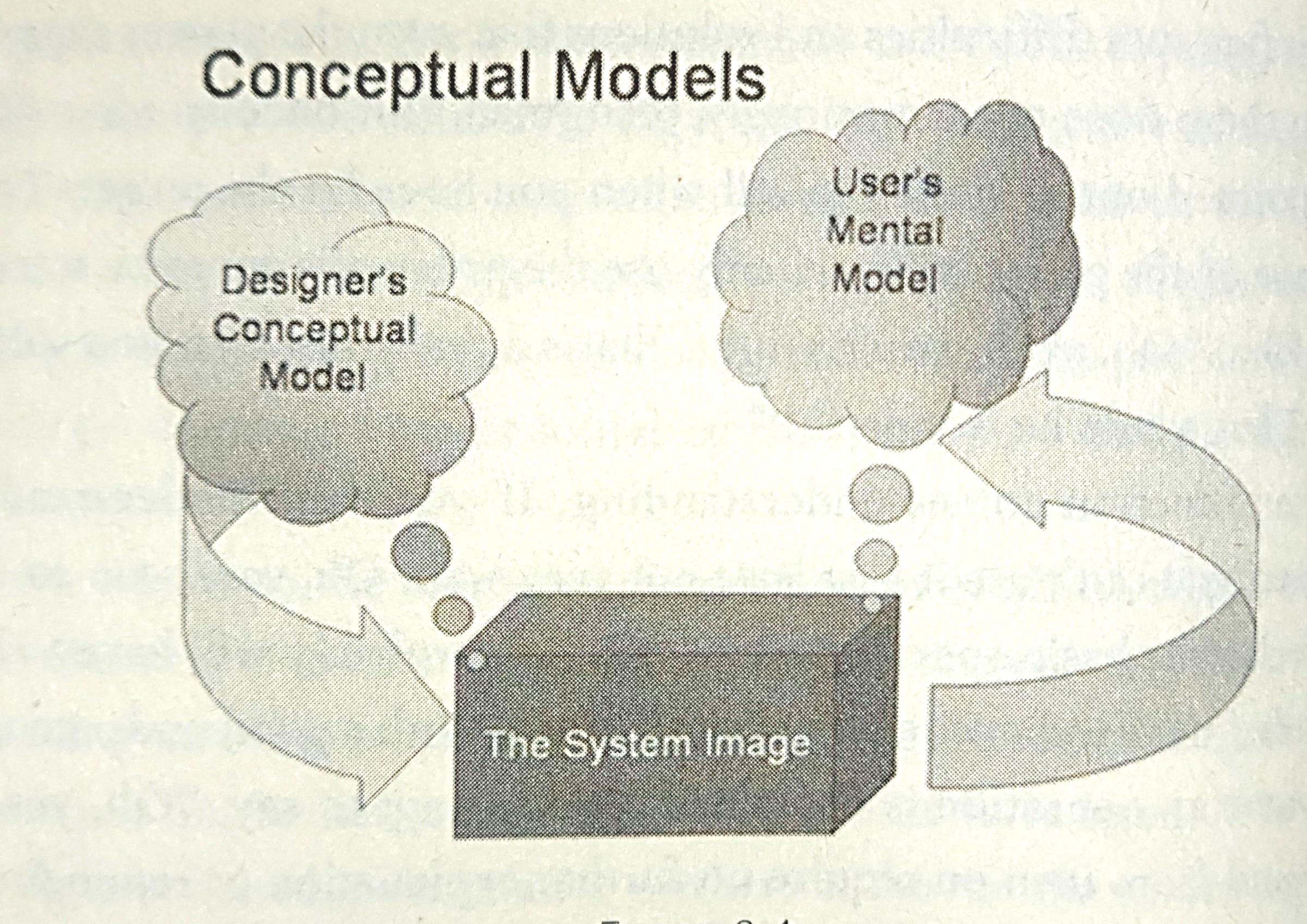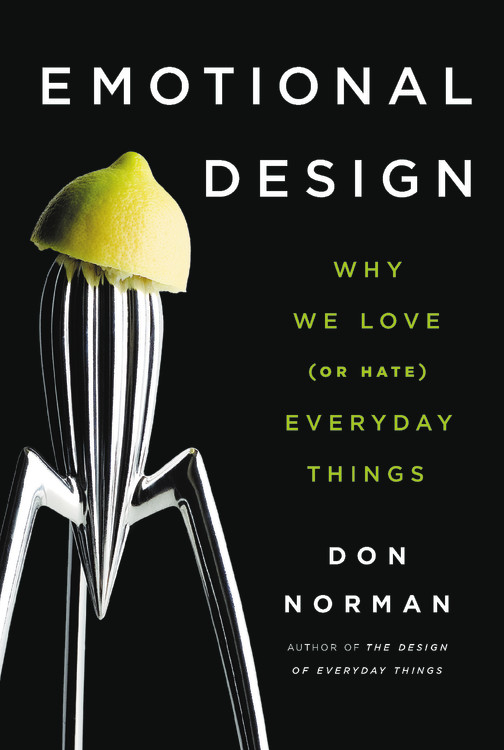Emotional Design - By Don Norman - Book Notes
Part 0: Prologue: 3 Teapots
3 different aspects of design:
- Visceral (appearance)
- Behavioral (function)
- Function
- Performance
- Usability
- Reflective (the story that it tells)
-
“…… The car is so much fun to look at and drive……”
-
Emotions help us make decisions.
Part 1: The Meaning of Things
1. Attractive Things Work Better
-
Being happy broadens the thought processes and facilitates creative thinking
-
Being anxious narrows the thought processes, concentrating upon aspects directly related to the problem
-
This is a useful strategy in escaping from danger, but not in thinking of creative approaches to solve a problem
-
So happy people (pleased with the aesthetics) are more open to solve problems
-
Different levels of brain:
-
Visceral: automatic/prewired, lowest
-
Behavioral
-
Reflective: contemplative, conscious, highest
-
-
In negative situations, you are focused. More resources are put into visceral level.
-
When you are positive, you are relaxed. Thinking broadens and you are in reflective state, far less focused.
-
E.g. in a plant monitoring room, in case of a dangerous event, it should create a negative effect so as to keep the operators more focused. Alarm sounds, red lights spinning and pulsing, etc.
-
Don’t overdo it though, coz too much anxiety creates a tunnel vision, making the brain to think nothing at all.
Visceral
-
Visceral level is incapable of reasoning, of comparing a situation with past history.
-
It works by what cognitive scientists call “pattern matching”
-
People are genetically programmed for those situations and objects that, throughout evolutionary history, offer food, warmth, or protection, which have positive effects.
-
These conditions include:
- warm, comfortably lit places, temperate climate, sweet tastes and smells, bright, highly saturated hues, “soothing” sounds and simple melodies and rhythms, harmonious music and sounds, caresses, smiling faces, rhythmic beats, “attractive” people, symmetrical objects, rounded, smooth objects, “sensuous” feelings, sounds, and shapes.
-
Similarly, conditions that produce automatic negative effects:
- heights, sudden, unexpected loud sounds or bright lights, “looming” objects (objects that appear to be about to hit the observer),extreme hot or cold, darkness, extremely bright lights or loud sounds, empty, flat terrain (deserts), rotting smells, decaying foods harsh, abrupt sounds, grating and discordant sounds, misshapen human bodies, snakes and spiders, human feces (and its smell), other people’s body fluids, vomit. crowded dense terrain (jungles or forests), crowds of people, bitter tastes, sharp objects.
-
Above list isn’t perfect, and humans change
2. The Multiple Faces of Emotion and Design
- The Macintosh was regarded as ‘too playful’ for workplaces. Although it was same as any other business computer.
Feelings of self:
-
The heathkit, which was used to build radio and other electronics from kit parts, was very popular among its customers as they felt a sense of accomplishment. More so than actual electronic experts, as the hobbyists went out of their expertise to do it.
-
Betty Crocker Company introduced a cake mix which didn’t pick up, as it was too easy to make, hence leaving no connection with the person and no sense of accomplishment. Later they improved it by adding an extra method.
Part 2: Design in Practice
3. Three Levels of Design: Visceral, Behavioral and Reflective
-
Four important aspects of behavioral design:
-
Function
-
Understandability
-
Usability
-
-
Predicting the popularity of a new product is hard
-
Understand end-user’s unmet and unarticulated needs is also hard. E.g. cup holders in floor cleaning machines
-
The secret to good understanding of the product by the user, is to establish a proper conceptual model of the product
-
Three mental images of any object:
-
Designer’s model
-
User’s model (=designer’s model in an ideal world)
-
System image (product with its written material)
-
 The designer’s model, the system image and the user’s model (Source: the book)
The designer’s model, the system image and the user’s model (Source: the book)
Designers vs users
-
Focus groups, questionnaires, surveys, etc. are poor ways for learning about behaviour because they are divorced from actual use
-
The makers get so attached with the product that they fail to see the product in the way the unattached user sees it
-
The exception is when the makers use the product themselves. This is why best products come from fields like sports, athletic, craft, etc. as they are made and used by the same group of people
-
Steve jobs made the computers to be used by himself more than anyone. Hence the excellence
The reflective design
-
The overall impact of a product comes through reflection.
-
A person thinks back about the product, reflecting upon its total appeal and the experience of using it.
-
This can make the good qualities of the product overcome its bad qualities.
-
Shops: make it difficult to find the most desired items so that the customer gets to see other products which he may end up buying, even though he didn’t need it.
Design by committee vs individual
-
Movies can either be unintelligible, but artistically sound, but useless to the masses, or, entertaining to the masses and artistically not much deep.
-
Business vs art.
4. Fun and Games
-
Beauty, fun and pleasure give a positive effect.
-
Some say, hide the beauty to preserve its value, coz seeing it always makes it less interesting. Brain produces less activity each time you see it. But this is debatable, and depends on the beauty and the viewer. You can enjoy some things forever, if you know how to look.
-
The ‘Juicy Salif’ is seductive and is made to start conversations, and not to make juice, says its designer.
-
Music matters too.
5. People, Places and Things
-
We readily perceive emotional states in people and things which are lifelike.
-
“The iMac resembles a face!”
-
We interpret everything we experience, much of it in human terms.
-
This is called anthropomorphism, the attribution of human motivations, beliefs, and feelings to animals and inanimate objects.
-
B.J.Fogg, in his Persuasive Technology, proposes 5 primary social cues that people use to infer sociability with person/device, with whom/which they are interacting:
-
Physical: face, eyes, body, movement
-
Psychological: preferences, humor, personality, feelings, empathy, “I’m sorry”
-
Language: interactive language use, spoken language, language recognition
-
Social dynamics: turn taking, cooperation, praise for good work, answering questions, reciprocity
-
Social rules: doctor, teammate, opponent, teacher, pet, guide
-
-
The object shouldn’t lose trust in the user. Look at what happened to Cyberpunk, they didn’t deliver as advertised and users were frustrated and lost trust in CDPR.
-
Although exact prediction of successful products is not possible, we can be certain of one category that almost always succeeds: social interaction.
-
Mobile phone is fundamentally an emotional tool and a social facilitator.
6. Emotional Machines
Emotions in machines help in decision making. E.g., to select priority of tasks
Emotions also help the machine to focus in peril. Remember how we focus more when in danger and think more creatively when happy?
“Animals and humans have developed sophisticated mechanisms for surviving in an unpredictable, dynamic world, coupling the appraisals and evaluations of affect to methods for modulating the overall system. The result is increased robustness and error tolerance. Our artificial systems would do well to learn from their example.”
7. The Future Of Robots
-
Asimov’s rules for robots assume that the system is centrally controlled. But mostly, control in nature is distributed.
-
It’s always the people who are evil. Science and technology are innocent. So if u wanna put a brake to evil things, look at evil people, instead of striking against science developments.
=== End Of Book ===
